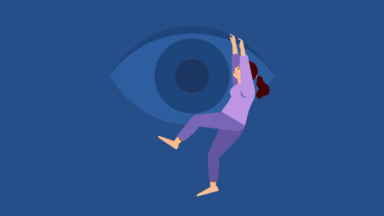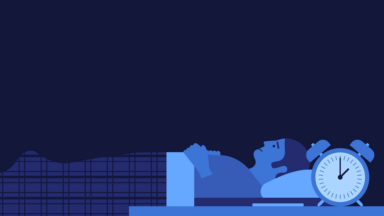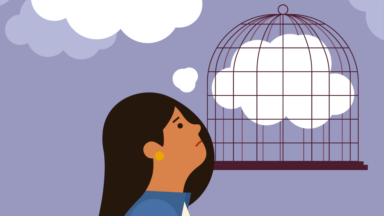
A restful night’s sleep is essential for our physical and mental well-being, but for many, sleep disorders can shatter the dream of peaceful slumber. Two common sleep disorders that often coexist are sleep apnoea and insomnia. The interaction between these conditions can be complex and daunting, but understanding their relationship is key to finding effective treatments. In this blog post, we’ll delve into the connection between sleep apnoea and insomnia, backed by research and evidence. By the end, you’ll gain insights into how these conditions influence each other and how you can reclaim your good night’s sleep.
Understanding Sleep Apnoea and Insomnia
Sleep Apnoea is characterised by repeated pauses in breathing during sleep, caused by an obstruction in the airway (obstructive sleep apnoea) or a failure of the brain to initiate breathing (central sleep apnoea). These interruptions can lead to fragmented sleep and reduced oxygen levels in the body.
Symptoms of sleep apnoea mainly happen while you sleep.
They include:
- breathing stopping and starting
- making gasping, snorting or choking noises
- waking up a lot
- loud snoring
During the day, you may also:
- feel very tired
- find it hard to concentrate
- have mood swings
- have a headache when you wake up
Obstructive Sleep Apnoea (OSA)
OSA occurs when the muscles at the back of your throat become overly relaxed during sleep. When these muscles relax, they narrow the airway or even block it entirely. This leads to reduced or halted airflow and, in turn, low oxygen levels in the blood. The brain senses this drop in oxygen and briefly awakens you to reopen the airway, often with a loud gasping or choking sound. These interruptions can occur numerous times throughout the night, preventing you from achieving deep, restorative sleep.
Central Sleep Apnoea (CSA)
CSA is less common than OSA and occurs when the brain fails to send the proper signals to the muscles responsible for controlling breathing. This results in irregular or absent breathing patterns during sleep. Normally, the brain sends signals to the muscles involved in breathing to maintain a regular rhythm. With CSA, these signals become disrupted or may not be sent at all, leading to irregular or shallow breathing during sleep. CSA is often associated with underlying medical conditions that affect the brain stem, heart, or lungs.
Insomnia involves difficulty falling asleep, staying asleep, or experiencing non-restorative sleep, often accompanied by daytime impairments. It can result from various factors, including stress, poor sleep habits, or underlying medical conditions.
Difficulty Falling Asleep: Insomnia often involves trouble initiating sleep. Individuals may find themselves lying awake in bed for an extended period before falling asleep.
Frequent Awakenings: People with insomnia may wake up during the night and have difficulty returning to sleep. These awakenings can be brief or prolonged.
Non-Restorative Sleep: Even if individuals manage to sleep for an adequate duration, they may wake up feeling unrefreshed and fatigued.
Daytime Impairments: Insomnia can lead to various daytime symptoms, including daytime sleepiness, irritability, difficulty concentrating, and impaired memory. These can affect work, social interactions, and overall quality of life.
The Complex Relationship Between Sleep Apnoea and Insomnia
Research has uncovered a multifaceted relationship between sleep apnoea and insomnia.
Sleep apnoea and insomnia share common symptoms like fragmented sleep and daytime fatigue, making it challenging to differentiate them. Studies also suggest that sleep apnoea can trigger or worsen insomnia, and conversely, insomnia can exacerbate the severity of sleep apnoea. Both conditions have similar risk factors, such as obesity, older age, and gender.
Treatment Approaches
Managing both sleep apnoea and insomnia may involve a combination of therapies. It’s essential to know the type of sleep apnoea you may have, as treatment approaches can differ. Diagnosis is typically made through a sleep study (polysomnography) conducted in a sleep clinic or at home. Consultation with your GP or a sleep specialist is critical for accurate diagnosis and developing a personalised treatment plan.
CPAP Therapy: For sleep apnoea, continuous positive airway pressure (CPAP) therapy is highly effective in improving sleep quality. A CPAP machine is a mask that you wear while you sleep, which keeps your airways open so you can receive the oxygen you need.
Cognitive-Behavioural Therapy for Insomnia (CBT-I): CBT-I is a highly effective and non-drug treatment for insomnia. It helps change negative thought patterns and behaviours related to sleep. Sleepio is a CBT-I treatment that works with you to develop a personalised insomnia treatment plan, empowering you to challenge negative thought patterns, establish healthy sleep habits, and enjoy restful nights of sleep.
Lifestyle Modifications: Adopting healthy sleep practices and maintaining a consistent sleep schedule can benefit both conditions.
In summary, the relationship between sleep apnoea and insomnia is intricate, often resulting in overlapping symptoms and shared risk factors. Effective treatments for these conditions are available, and consulting your GP is crucial for a treatment combination that works for you. By understanding the connection between sleep apnoea and insomnia, you can take significant steps toward achieving a good night’s sleep and improved well-being.

Here’s our latest

Does Cognitive Behavioural Therapy For Insomnia Really Work?
For many people, the struggle to get a good night’s sleep is all too familiar. Insomnia can affect every aspect…

Is It Dangerous To Take Sleeping Tablets Every Night?
In our fast-paced lives, getting a good night’s sleep can be a challenge. Many people turn to sleeping tablets to…

Sleep After a Stroke: Stroke-Induced Sleep Disorders
Recovering from a stroke is a journey that comes with various challenges, and one of the often overlooked issues is…


